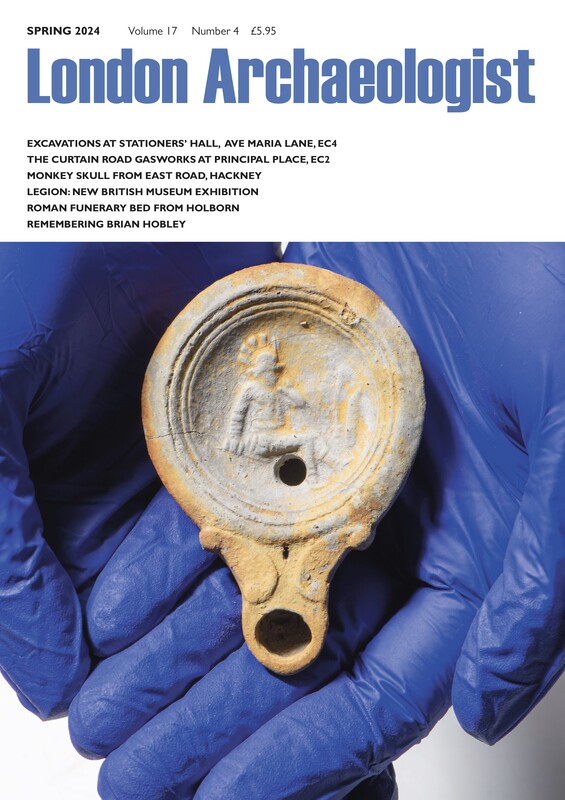Current issue
Spring 2024
Features
Research Monkey Skull from East Road, Hackney The discovery of a monkey skull, found during excavations in East Lane, Hackney, has raised the question as to whether it was a remnant from Hall’s Museum in the City Road, an entertainer’s aide or a pet that was then stuffed. Kevin Rielly Excavations at Stationers’ Hall, EC4 The excavations provided evidence for the buildings on the site before the Great Fire, prior to the construction and subsequent development of Stationers’ Hall. Ian Hogg The Curtain Road Gasworks, Principal Place, EC2 The Gas Light and Coke Company is the earliest known commercial public gas company in the world. The remains of the gasworks at Principal Place presented significant evidence for this early industry. Andy Daykin Obituary: Brian Hobley (1930–2023) An appreciation by Max Hebditch, Gustav Milne and two former DUA colleagues Plus book review, commentary, news, and diary On the Cover The excavation of the remains of part of the Roman western cemetery last year led to the discovery of a Roman wooden bed as well as burials in wood coffins and a variety of personal grave goods including glass melon beads, a glass phial, and a decorated ceramic lamp (see feature pp 87–8). The lamp was found in a cremation burial and it is thought to date to the very early Roman period in Britain c. AD 48−80. The discus of the ceramic volute lamp depicts a gladiator falling backwards, wearing a crested helmet with his left arm raised up to his face and brandishing a sword in his right hand. The hole for filling the lamp with oil fits into the angle of his bent right knee and there is a small air hole in the nozzle channel along with the larger hole to take a burning wick. Gladiatorial combat developed from Etruscan and Republican funerary rites, but became a fashion among wealthy Romans of the late 3rd and early 2nd centuries BC, who began to stage the shows as entertainment. For this reason, fallen gladiator lamps have a funereal connotation and sometimes appear as grave goods. Photo. © MOLA |

